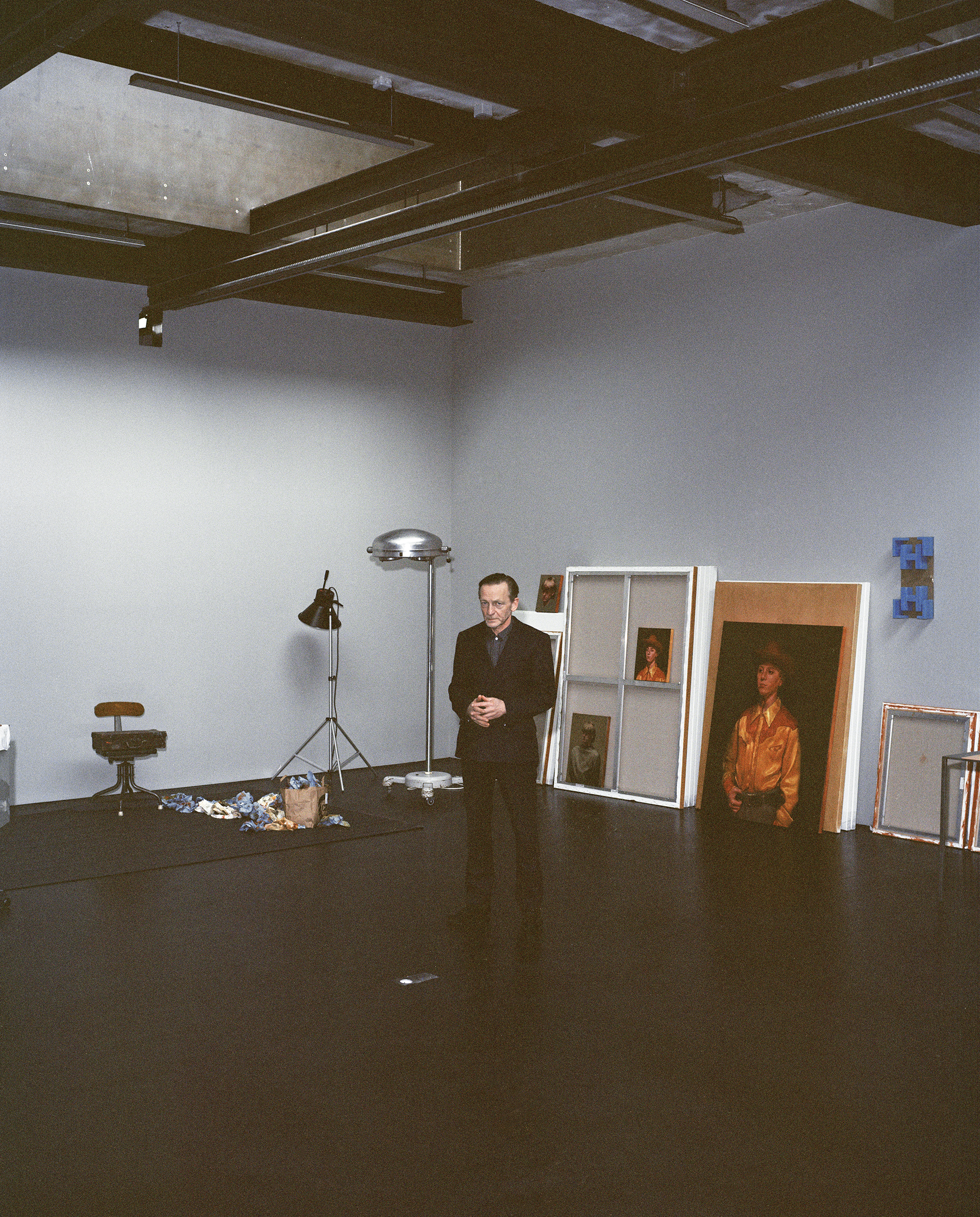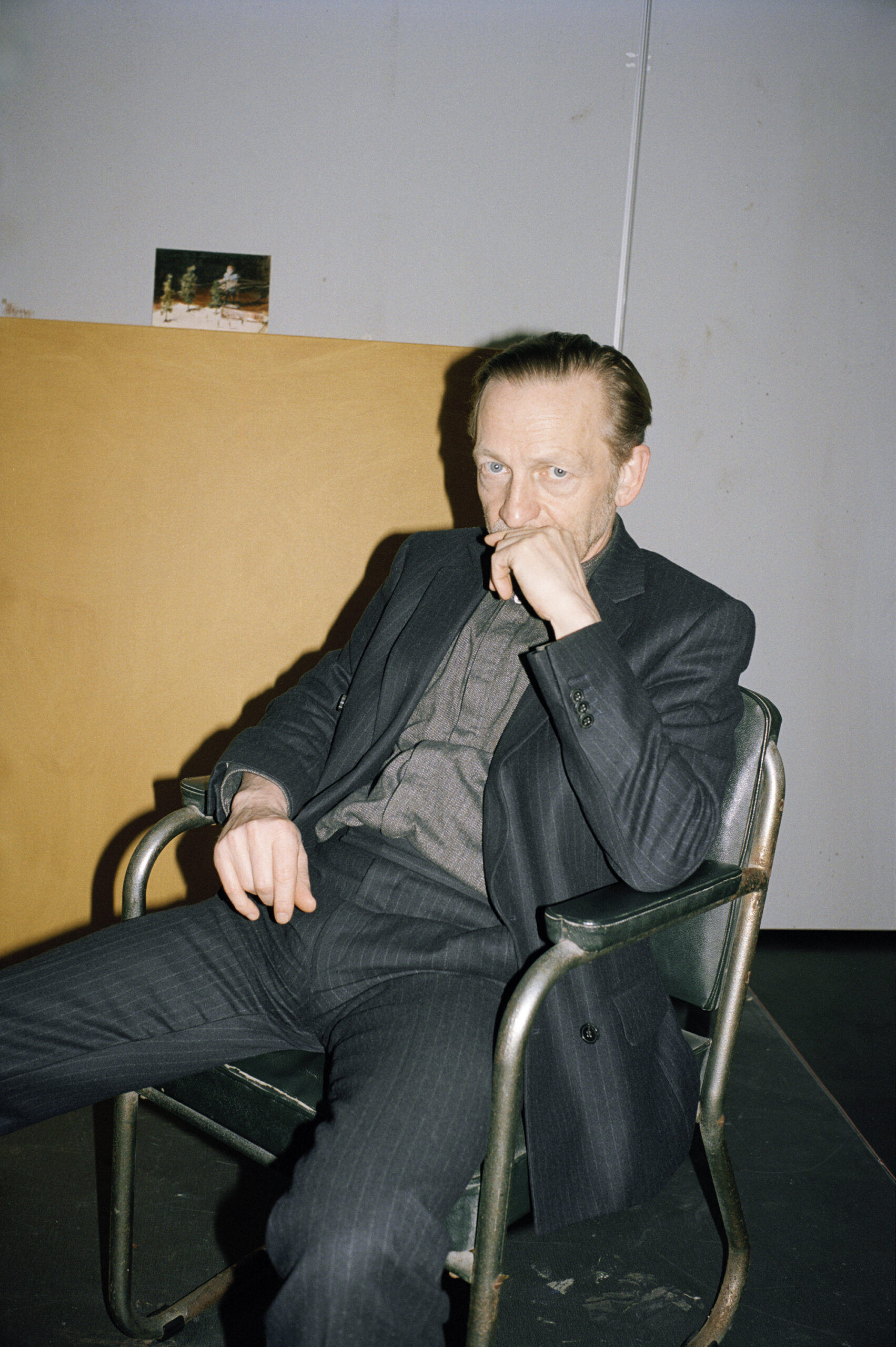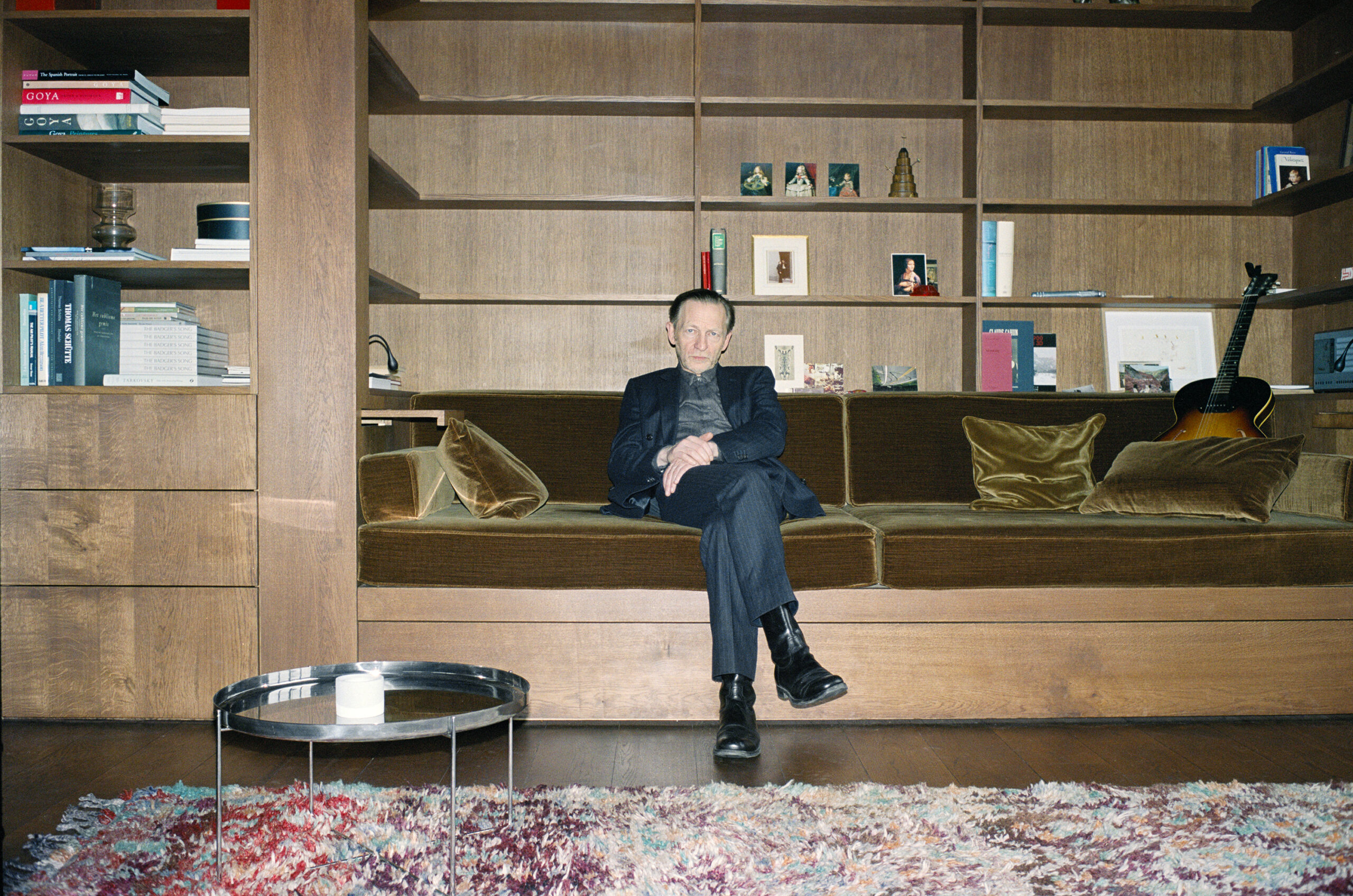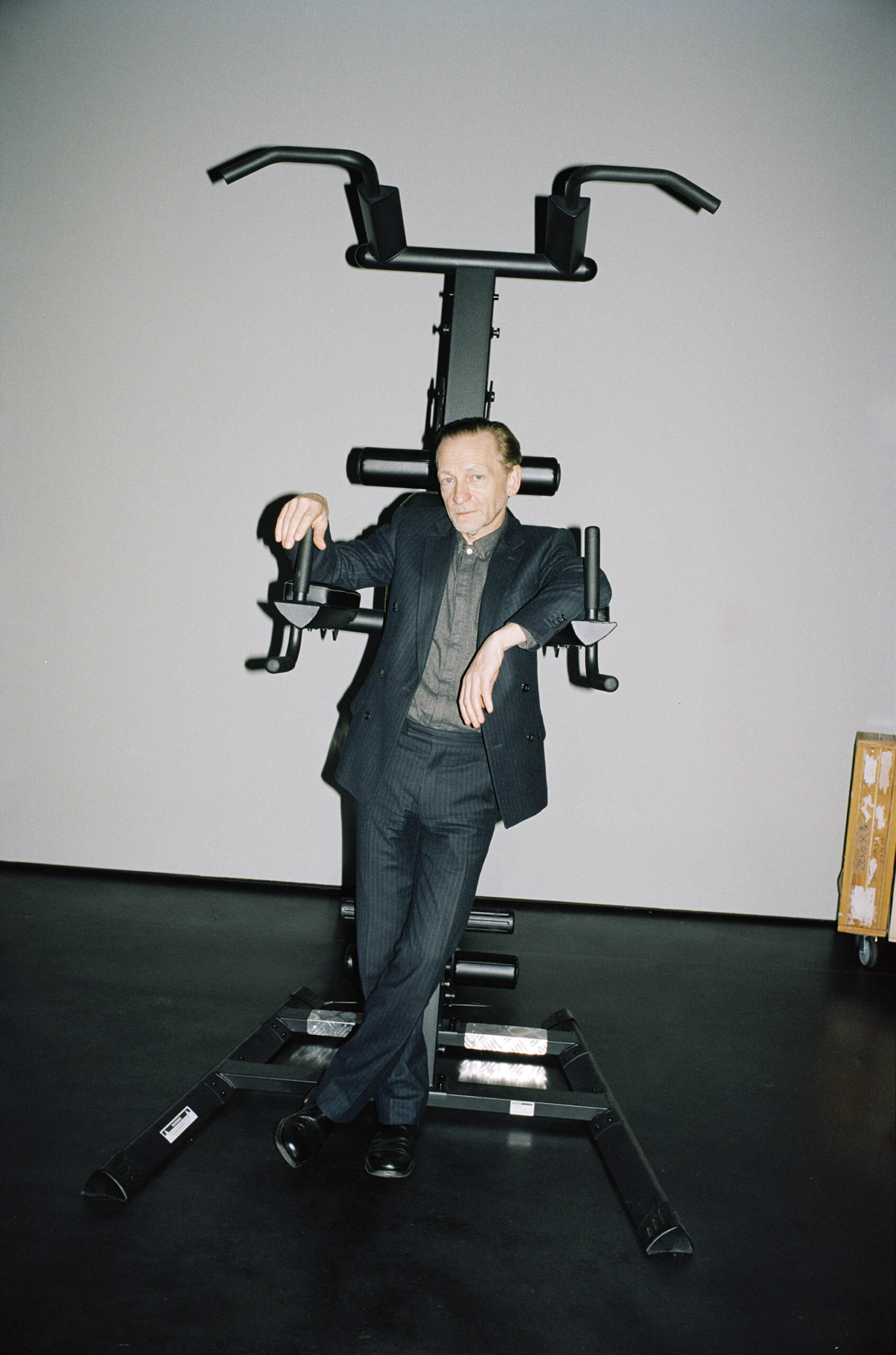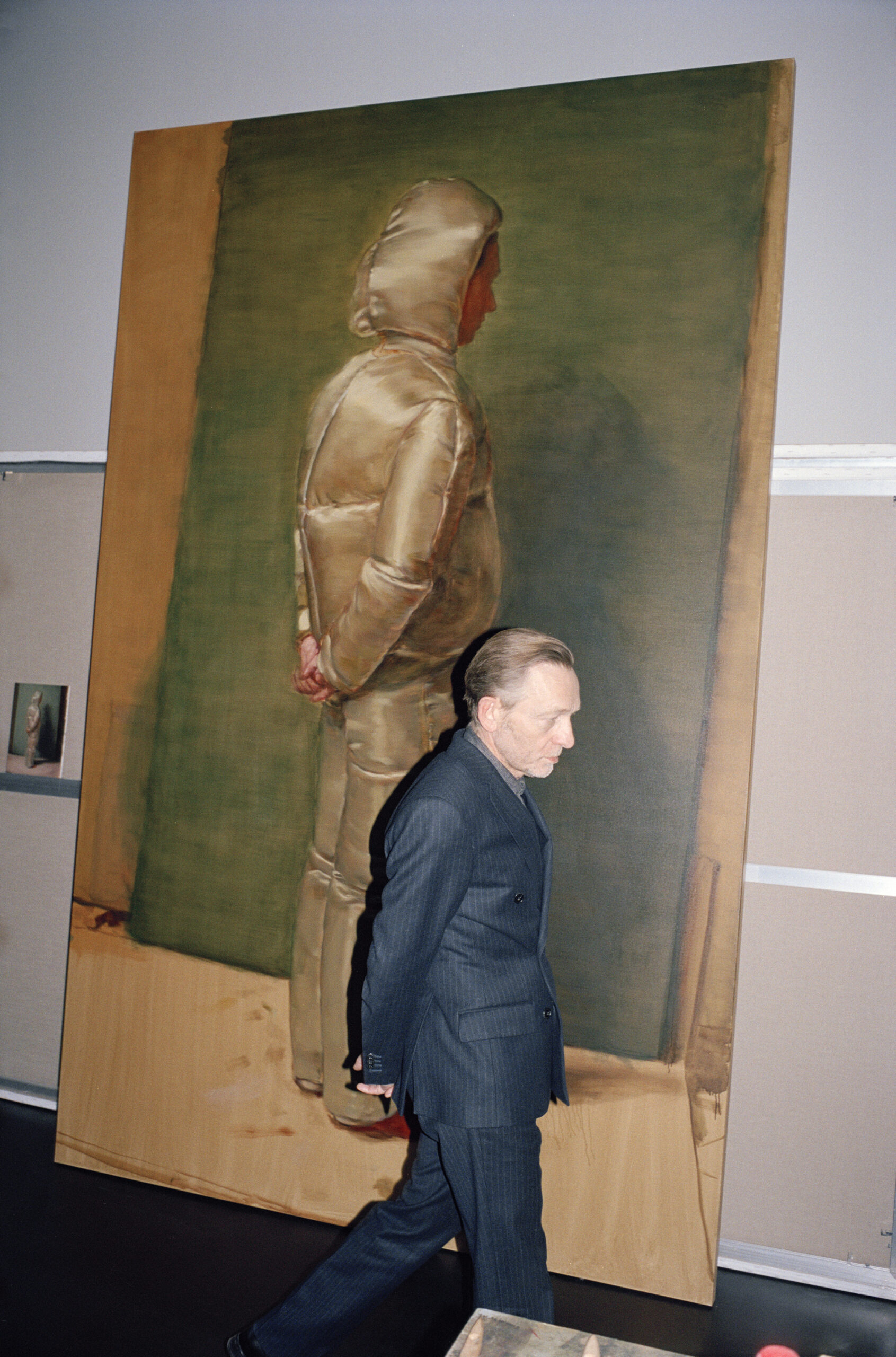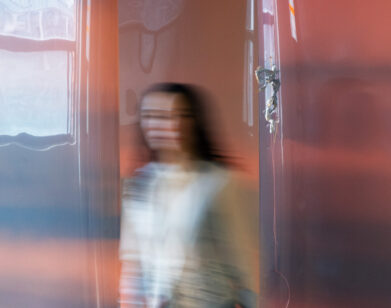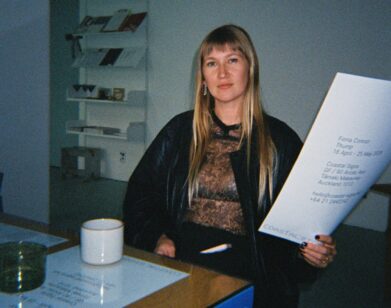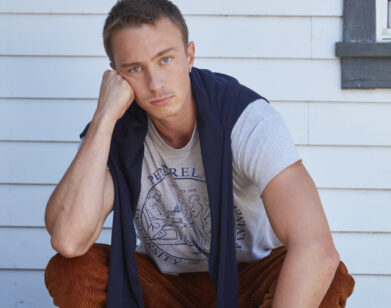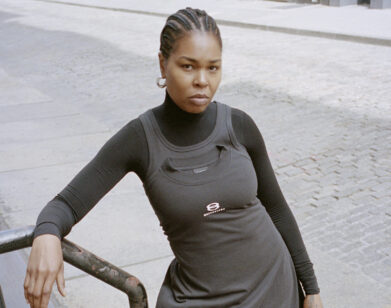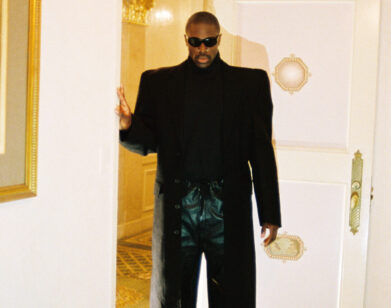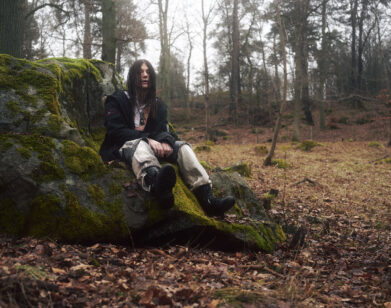ART
Michaël Borremans Reveals His True Colors to Luca Guadagnino
In the spectacle-driven carnival of the contemporary art world, one of the most transgressive artists today is a master of quiet. Michaël Borremans works in film, photography, and sculpture, but the Belgian artist is best known for his oil paintings, where he blends the traditions of a forgotten past and the tremors of the modern psyche, resulting in seductive and disturbing mindscapes, somewhere between myth and realism. Working out of a handful of studios sprinkled around his home country, Borremans has been finishing up a series of paintings that will be shown this summer at David Zwirner Gallery in London, following an exhibition of older works at the Prada Foundation in Shanghai. He’s also rumored to have a cameo in director Luca Guadagnino’s upcoming film Queer, based on William S. Burroughs’ novel. To add fuel to the fire, the Italian director traveled all the way to Ghent to chat with the artist in his painting studio, before heading to lunch.
———
SATURDAY 12PM FEB. 10, 2024 GHENT, BELGIUM
LUCA GUADAGNINO: The recorder is working. You said let’s talk about silly things.
MICHAËL BORREMANS: Do you want chocolate?
GUADAGNINO: I do.
BORREMANS: Talking of silly things, this is chocolate from Holland.
GUADAGNINO: Oh, wow. Truffles.
BORREMANS: We have the best chocolate in Belgium, but these Dutch chocolates aren’t too bad. They call them heavenly stones. You have to be Dutch to invent this. I cannot imagine ever inventing something like this.
GUADAGNINO: Do you go to Holland often?
BORREMANS: If I have to. I have a show there at the end of the year.
GUADAGNINO: You have many shows this year.
BORREMANS: Yeah. I’ve been lazy the last couple of years. I’ve been working, but not many shows.
GUADAGNINO: So the laziness is in the presentation of your work, more than in actually doing it.
BORREMANS: Yeah. But since coronavirus, I’ve been working at a different pace with a different mindset. I only have one gallery I work with, so that took away some tension. And, I have different production lines. I have traditional painting, drawings, and sculpting ideas. I have film things. I work on these different things at different times, and I wanted everything to develop slowly. The sculptures take years before I can make a show. I like this.
GUADAGNINO: Why is slowness a value for you?
BORREMANS: To have a dialogue with a work in progress is so important. It’s like slow cooking.
GUADAGNINO: Or like the slow making of a bread that takes long hours of waiting for the dough to rise.
BORREMANS: You have the experience on that. I don’t.
GUADAGNINO: You don’t cook. I started learning how to make brioche. It takes a day and a half and then you eat it in five minutes, which is not what happens with your painting, of course.
BORREMANS: I like it because it gives me time. It’s good to have deadlines from time to time, but it’s also good to anticipate this deadline for years. It adds to the quality of the work. It gets more “soul,” in a way.
GUADAGNINO: What do you mean by soul?
BORREMANS: Well, depth. More layers. For me, it works well to give things time, so they can almost develop on their own. It’s always a work in progress. That’s why I have different studios in different locations, because I can leave things there, close the door, and come back after two months. In the meantime I go to another studio. And since I have a fetish for real estate—
GUADAGNINO: Me too.
BORREMANS: It goes hand in hand.
GUADAGNINO: Is constantly working important for you?
BORREMANS: Different disciplines have different demands. Painting needs a lot of discipline, but I can only paint when I feel I should. Sometimes I spend days in my studio without painting because I wait until I feel like I have to do it.
GUADAGNINO: What are you doing while you wait? Playing drums?
BORREMANS: I play drums and guitar. But mostly I look at my work or think about my work. But with the act of painting, it’s only at given times that I think, “Okay, now, I feel like doing this.” That’s when I do it. I believe in inspiration.
GUADAGNINO: What inspires you?
BORREMANS: I have a very romantic soul.
GUADAGNINO: I know you do. You’re romantic in that you find a constant relationship between the unconscious, landscape, and memory, in order to create this image that is not necessarily figurative. Do you agree with that?
BORREMANS: That’s very well put. I wouldn’t be capable of putting it that way. [Laughs] It’s a very intuitive process. If I work when I don’t feel like working, I do very bad work. If a gallery needs work for a fair and you still have to make it, imagine—
GUADAGNINO: Since you mention art fairs, how much in your everyday life do you think about the business-driven art world?
BORREMANS: Never. It means making a living in a comfortable way. So the acceleration of the art market that we have seen in the last couple of decades is amazing, really. But it’s also, in my opinion, a bit overestimated and there’s a lot of quick fashions.
GUADAGNINO: Bubbles. And they go away.
BORREMANS: Sometimes there’s a lot of fuss for nothing, but that’s how the market works. Also, strangely enough, contemporary art goes for very high prices and 16th, 17th, 18th century art, a lot of it good quality, is underestimated. Because of fashion.
GUADAGNINO: Because of the demon of fashion. But it’s good, because if you can recognize a great work from the 16th or 17th or 18th century, you can purchase it and have something that suits your imagery. Right?
BORREMANS: These older works have an extra dimension because of the length of their existence. It gives them another layer of value because of the addition of time.
GUADAGNINO: With a great painting like that, you have to wonder how many people have gazed at it during its lifetime.
BORREMANS: In each generation, the gaze towards the work changes. So does the opinion about the work and the way that people read the work.
GUADAGNINO: I want to ask about the technical aspect of your art, especially with the time and thought process you need. Do you consider it “classical” or part of the canon of classicism?
BORREMANS: That’s not my goal. Like most artists, I try to reflect on life, on humanity, and on contemporary issues, but with the tools that are suitable for me. I like to reflect on contemporary worlds through a historical view. I’m very interested in history and in art history, of course. And I try to relate in terms of the visuals of today and the visuals of yesterday, because they are still present. Wherever you go, where you see culture, you see traces of the past. I agree with someone like Carlo Mollino, the Italian architect, when he says an architect or designer can only be eclectic because purity of style is an illusion. It’s basically impossible.
GUADAGNINO: What you’re saying makes me think: Yesterday I was strolling in Ghent and—
BORREMANS: Yesterday?!
GUADAGNINO: Yes! We slept in Ghent. And in the evening, after dinner, we went for a little stroll in the city center, which is a bit touristy but has beautiful buildings. I discovered that you donated a fresco you made of a young girl with rays of light coming out of her eyes. It’s like she’s looking at the contemporary art in front of her at the City Pavilion, but it’s also surrounded by the antiquity of the city of Ghent.
BORREMANS: The architect invited me to do something there. But it needs restoration already. It’s an oil painting on concrete.
GUADAGNINO: Oh my god. You did it right on the concrete wall? Did you paint it in the square in front of everybody?
BORREMANS: No. They made a little tent.
GUADAGNINO: But you still did it there.
BORREMANS: Yeah.
GUADAGNINO: So every time you went to the square, you were painting behind a curtain?
BORREMANS: I heard people walking and talking.
GUADAGNINO: This must have been a beautiful experience. How long did it take?
BORREMANS: A couple of days. I tried to make it as fast as possible. I didn’t like to be there. And I’m a bit tired of it, so maybe if I restore it, I should—
GUADAGNINO: Remake it?
BORREMANS: I’m free to do what I want. So maybe take it off and paint a pot of flowers there.
GUADAGNINO: Do people ask you for a selfie with it when you’re walking past?
BORREMANS: No, they don’t know. I keep a low profile these days. I didn’t do interviews or television in Belgium last year because then everyone recognizes you and bothers you. I don’t like that so much.
GUADAGNINO: In 2008 or 2009, I went to Crema, this village south of Milan. I loved the life there. For me, it was beautiful. I had a very lovely apartment in an old palazzo, and I like to cook, so I was going on errands, getting groceries and stuff. The quality of life of being completely immersed in anonymity was great. And then I came back and made Call Me by Your Name in the village, and everything was over because suddenly I was the director of the movie in the village, so I had to run away. I literally left the day after someone started to film me with their phone. So I understand your position.
BORREMANS: When I have a show abroad and then come home, I enjoy the peace. It’s better for me not to do a show where I live. I don’t want to disturb that peace.
GUADAGNINO: In your art there are a lot of beautiful animals. It’s a recurring theme. I guess it’s about wilderness, right?
BORREMANS: When I meet an animal, like a hare or a deer or a fox, it makes my day. It makes me warm inside to see wildlife. It’s mythical.
GUADAGNINO: Do they look at you when you bump into them?
BORREMANS: The hare always sees you. But if you’re a bit too close, it runs away. The hare is very scared.
GUADAGNINO: But in your painting of the badger, I feel it’s looking right at me.
BORREMANS: Yeah, but it’s more a metaphor. It’s actually me. Everything is a self-portrait. And now I have been painting monkeys.
GUADAGNINO: I see one behind you.
BORREMANS: But it’s not just a self-portrait. It’s a universal version of the portrait of the painter, the figure of the artist. The next show will be called “The Monkey,” and there will be monkeys in the show. It has an analogy to the work of Jean Siméon Chardin.
GUADAGNINO: An artist you go back to often.
BORREMANS: He’s one of my all-time favorite painters. I like to show the artist as a monkey because, especially today, the artist is more and more like a monkey that has to perform for the public.
GUADAGNINO: Is it a compassionate portrait of yourself?
BORREMANS: You could say that.
GUADAGNINO: You did a show in New York two years ago. One work was called “The Witch.” Who is a witch for you? Because I did a movie about witches [Suspiria, 2018], so it’s a very important theme for me.
BORREMANS: I just wanted to make a provocation, to have a very common-looking character, which you would never associate with a witch, and call it “The Witch.” A witch can be anything or anyone. I don’t believe in witches, but maybe you do.
GUADAGNINO: I believe in the way in which people depict other people as witches because they do not understand them. So I believe in the stigma of labeling people “witch.” If you ask me if I believe in the actual magic, not really. But I think when people label you something like that, it’s very powerful. Being labeled something is super powerful. You call me witch then, okay, I will behave like one.
BORREMANS: Yeah. The labeling of a painting is very important.
GUADAGNINO: Tell me, do you collect contemporary art?
BORREMANS: No, sir. I used to try to be a collector.
GUADAGNINO: [Laughs] Can you expand on “used to try”?
BORREMANS: I had some artist friends, especially when I was younger, and I wanted to have at least one of their works which I liked. A modest work. So I have a collection of that on my wall and that was the start of it. Then I grew bored of the work and hid them in my wardrobe. They’re still there. So I do buy some old stuff here and there and I did collect some abstract paintings. I have a weak spot for geometric abstract paintings.
GUADAGNINO: Like Josef Albers?
BORREMANS: Yeah. I don’t have one in my collection, but I did buy some from younger artists. But when I buy a painting, it’s always abstract and geometric for some strange reason.
GUADAGNINO: Because of how clean the vision is?
BORREMANS: Because it’s so opposite to what I do.
GUADAGNINO: I still don’t feel you do figurative paintings. Do you agree with me on that? Because they are very conceptual. There is a very strong idea behind it.
BORREMANS: Yeah, it’s very conceptual. But I’m a post-conceptual artist, so it’s a bit normal.
GUADAGNINO: I may be using words wrongly here, but for me, when I think of something, it’s like a translation of an idea. And what I see in your work, it deals with the unconscious, very, very strongly. The figurative deals with the matter-of-fact. But the unconscious is “fighting back” the matter-of-fact or dismantling it. Right?
BORREMANS: I play with the conventions of painting as a medium and the conventions of imagery in Western culture. I question it by making unexpected associations within the image, which are very subtle sometimes, and that provokes an interesting situation in how you perceive the work. And the title plays a very important role in that. When I make the work, I try to see that happen. I try to see if it has the spark that can provoke that.
GUADAGNINO: When do you title your work? While you’re doing it, or when you finish?
BORREMANS: It’s always different. Sometimes before, sometimes in the process, sometimes after. And sometimes I don’t find the title and I give it a title anyway.
GUADAGNINO: How do you approach the size of the painting?
BORREMANS: It’s very important. A painting only works if it’s in the right dimension. In the past, I struggled to find the right dimension. It was too big or too small, so I had to restart just to get it on the right scale. Because a painting is a physical presence and the size is important to how you perceive it. I’ve grown better at deciding. I still make mistakes, of course. But if someone tells me that my small works are better than my big works, I want to kill them, because they just don’t know what they’re talking about. It makes me so angry.
GUADAGNINO: The mother of stupid people is always pregnant, they say.
BORREMANS: [Laughs]
GUADAGNINO: We have been talking in this beautiful room, and since we’ve been in here, the change in light has been quite dramatic. I’m sure the way in which the light behaves in this part of the world is super important for you.
BORREMANS: I think so, yes. It’s unpredictable. And in winter, it’s mostly cloudy and raining, and that’s when the light is best for me to paint, because it’s diffused.
GUADAGNINO: Also for cinema. Diffused light is our ally. Direct light is the enemy.
BORREMANS: It’s more subtle. In my studio in Ghent, when it’s cloudy and the light is diffused, it’s perfect. When the sun is out, it gets very dark because all the windows are facing north and the contrast in the light is very hard. It’s a winter studio.
GUADAGNINO: Do you like going around the world for your exhibitions?
BORREMANS: I find it very exciting to show new work in a gallery, because I don’t know how it’s going to be received. When I do museum shows, it depends. You make a nice presentation and that’s it. That’s not the most exciting thing. But as for my upcoming shows, the exhibition at the Prada Foundation in Shanghai is more of a challenge. It’s an old colonial palace.
GUADAGNINO: I know that place. I like it. Are you allowed to paint the walls a different color?
BORREMANS: No. Everything is full of woodwork and furniture. It’s like a house.
GUADAGNINO: Do you like that? Or do you prefer a white space?
BORREMANS: I like both. This is challenging because I’ve never done this. I find it fun, although it’s been very difficult to select works. It’s all older works, mostly from Chinese collections. And then I have my show at David Zwirner which is all new work.
GUADAGNINO: When you, Michaël Borremans, the man and the artist, show new work, a new identity is forged, is that right? When you show something you’ve been doing for a long time in the privacy of your practice, people become acquainted with your new self. There is a sort of crash— or clash—with their expectations.
BORREMANS: I like that.
GUADAGNINO: It’s like making a movie. You make a movie for two years and people think of you based on your previous one. So the present is already in the past and I’m changed. So this new self that you are, they don’t know yet, and you watch the change of the gaze of others on you. It’s beautiful.
BORREMANS: They find out that you changed. It’s not a problem for me.
GUADAGNINO: Do you have fun at the vernissage?
BORREMANS: No. Nobody does.
GUADAGNINO: My problem is that they don’t serve good champagne. But you have a collection of champagne, don’t you?
BORREMANS: I like champagne. I only like “extra brut” from small young producers. They are all very ambitious and want to make a very good product. And they make very few bottles. So you have to be very quick to be able to buy them.
GUADAGNINO: I discovered that when you go to a winemaker, you might be entitled to buy only a few bottles and you have to apply for them every year.
BORREMANS: I go to a tasting every year and order right away.
GUADAGNINO: If you had to make a toast with champagne today, what would you toast to?
BORREMANS: To my freedom.
———
Retouching: Lukas Wassmann Studio.
Privacy by: A Little Tent.

